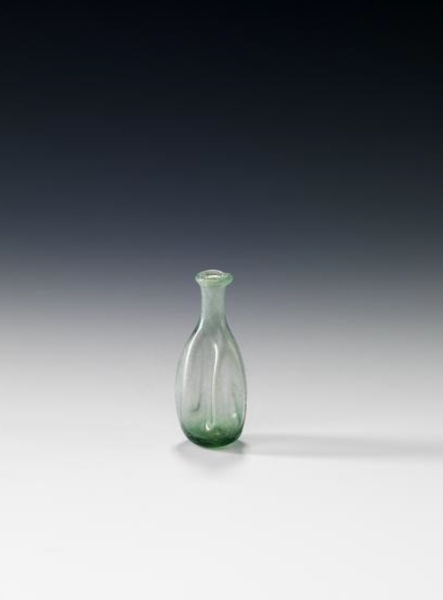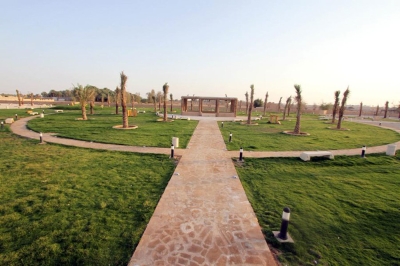

The Transparent Glass Bottle Artifact is a small-sized, ancient bottle made of transparent glass with a greenish hue. It features an elongated ribbed pear-shaped body, narrowing towards the top into a rounded cylindrical neck, which ends with an outwardly extended rim. The bottle has an irregular base that extends from the walls of the body, with some cracks.
This artifact dates back to the ninth century, corresponding to the Abbasid era of the Islamic period. It was discovered in al-Rabadha Historical Area, located about two hundred km east of al-Madinah al-Munawwarah, near the western edge of Hejaz Mountains in the Kingdom of Saudi Arabia. Al-Rabadha is a rich archaeological site known for numerous Islamic-period discoveries, including pottery, ceramics, stones, glass items, metal tools, jewelry, ornaments, writings, inscriptions, and coins.
Dimensions of the bottle
Height: 6.5 cm.
Opening diameter: 1.2 cm.
This type of bottle was used to store perfumes and precious liquids.
The discovery of this glass bottle is among the results of the efforts of Saudi archaeologists, scientific expeditions, and joint research teams, as part of archaeological surveys and excavations conducted by the antiquities and museums sector in Saudi Arabia over the past years. It is cataloged under the number R–14–2.
The glass bottle is preserved at the Museum of the Department of Archeology at King Saud University in Riyadh. It is one of the selected artifacts, alongside other pieces and collections of archaeological discoveries from Saudi Arabia, to participate in the Saudi Archaeological Masterpieces Through the Ages Exhibition. The exhibition was first held internationally at the Louvre Museum in Paris, the French capital in 2010 and then traveled to several exhibitions worldwide across Europe, Asia, and America.
Significance of the bottle
The crafting technique of this externally ridged bottle, with its concave base shaped by mold-blowing, highlights the high level of skill and precision achieved by Muslim artisans of the Abbasid period in their works. By utilizing ornamented manufacturing molds, these artisans produced functional tools for their daily activities. This artifact also reflects the cultural connections between the urban centers of the Arabian Peninsula, Iraq, and Iran in particular.
Related quizzes
Related articles
